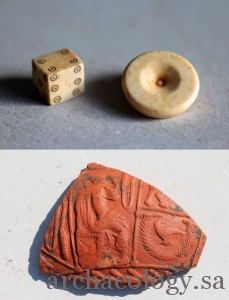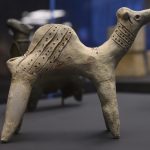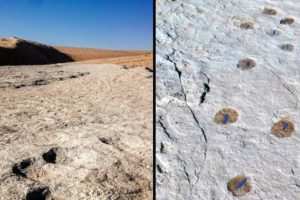
A team of archaeologists has unearthed the remains of a Roman settlement at the site of a 1,900-year-old fort in Gernsheim, Germany.
According to the archaeologists, a Roman cohort of around 500 soldiers was stationed at the fort between 70 and 120 CE.
A brick fragment found at the site identifies the soldiers as members of Legio XXII Primigenia (22nd Legion), a legion of the Imperial Roman army founded by the emperor Caligula in 39 CE for his campaigns in Germania along with its twin Legio XV Primigenia.
The newly-discovered settlement was occupied from about 120 to 260 CE.
“We now know that from the 1st to the 3rd century CE an important village-like settlement or ‘vicus’ must have existed here, comparable to similar villages already proven to have existed in Gross-Gerau, Dieburg or Ladenburg,” said team leader Dr Thomas Maurer of Goethe University, Germany.
“The people who settled in the village around the fort were primarily family members of the soldiers and tradespeople who benefited from the purchasing power of the military.”
He added: “a temporary downturn probably resulted when the troops left – this is something we know from sites which have been studied more thoroughly.”
The population probably had mainly Gallic-Germanic origins, with perhaps a few ‘true’ Romans.

“This is illustrated by specific finds, most notably pieces of traditional dress but also coins,” the archaeologists said.
They unearthed the well-preserved foundation of a stone building, fire pits, at least two wells and some cellar pits.
“We’ve also found real treasures such as rare garment clasps, several pearls, parts of a board game (dice, playing pieces) and a hairpin made from bone and crowned with a female bust,” Dr Maurer said.
“One of the historic finds from Gernsheim is a coin from Bithynia, which was certainly not among the coins in circulation in Germania Superior but would instead have been a form of souvenir.”















